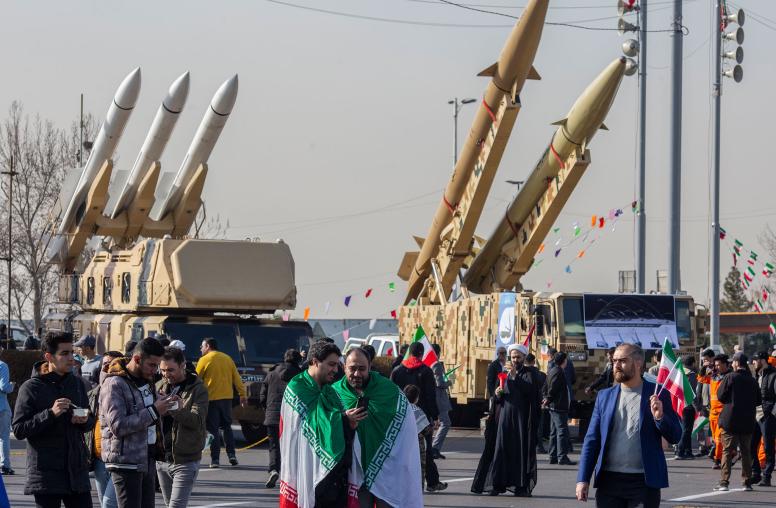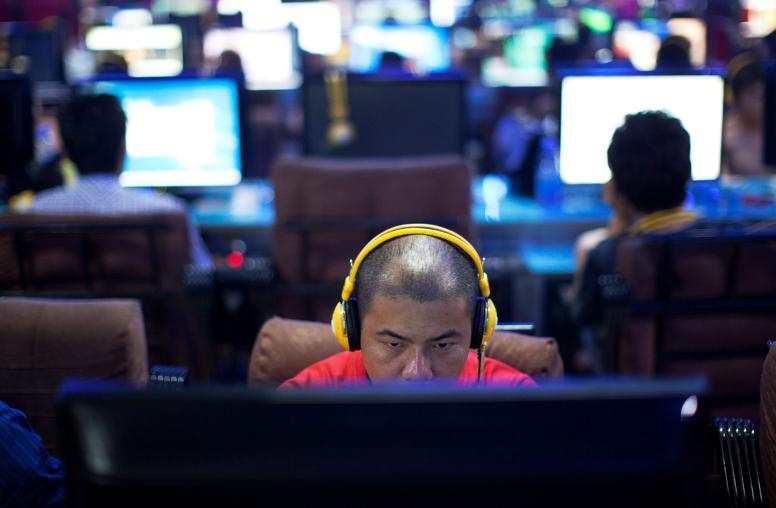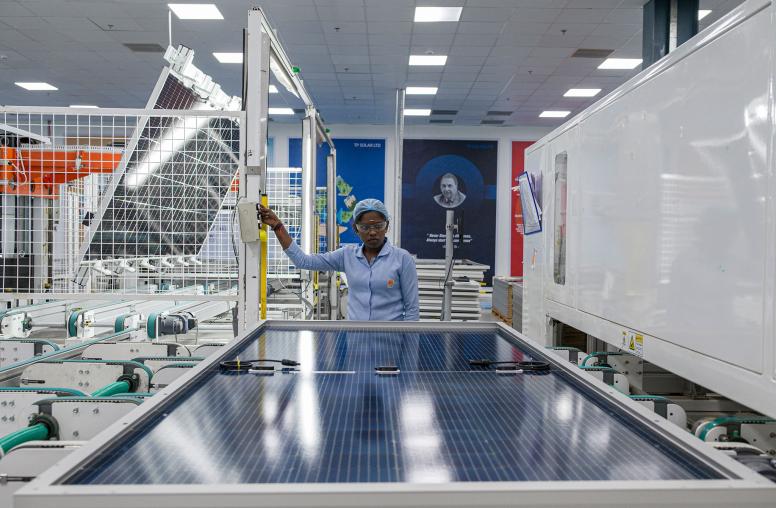Does China’s Coercive Economic Statecraft Actually Work?
Despite the hype, it remains unclear how much Beijing’s punitive economic measures help advance its influence and policy aims.
Much ado has been made in recent years over China’s use of economic diplomacy in its foreign policy, perhaps best characterized by its massive trillion-dollar connectivity project, the Belt and Road Initiative (BRI). As developing countries have turned to China for economic assistance and development, observers have warned that Chinese loan assistance to poor countries can come with strings attached, particularly enhanced political leverage for Beijing. But the extent to which Beijing is able to truly exert influence through economic statecraft remains an open and important question for researchers and policymakers alike, says China analyst Matt Ferchen.

Ferchen, who focuses on the relationship between China’s domestic and international political economy as a senior fellow at the Leiden Asia Centre, explains how China employs economic statecraft and coercion and how it impacts conflict around the world.
What is economic statecraft and how does China deploy it?
Economic statecraft is commonly understood as a country’s use of economic policies for foreign policy aims. Both in terms of academic research as well as public policy, economic sanctions have traditionally been the most commonly used and well understood form of economic statecraft. Yet especially when it comes to China’s use of economic statecraft, it has been clear for some time that it uses carrots (or inducements) as well as more punitive sticks. China’s BRI is an example of Chinese economic statecraft in which it has linked deeper trade, investment and lending relations to stronger political ties and possibly enhanced leverage, especially in its relations with developing countries.
In recent years, however, much focus — especially in G-7 countries — has been on China’s increasing use of coercive economic statecraft in which it has threatened, or implemented, limits on trade or investment with other countries or businesses as part of a political dispute. Early examples include China’s halting of salmon imports from Norway after a Nobel Prize was awarded to a Chinese human rights activist, and restrictions on Chinese rare earths exports to Japan as part of a maritime disagreement between the two countries.
The concept and practice of economic statecraft continues to have a great deal to offer researchers and policymakers, especially at a time when economic questions are increasingly understood as political and security issues. Yet too narrow a focus on economic statecraft can be misleading, especially because it is too often assumed that China is especially capable of effectively formulating and implementing both the carrot and stick aspects of economic statecraft. Instead, a focus on China’s economic influence can incorporate these more traditional aspects of economic statecraft as well as other forms of influence that are often less well understood.
Especially important are two types of influence that are not necessarily aligned with assumptions about China being an especially capable practitioner of economic statecraft. The first of these forms of economic influence is tied to China’s informal economy, in which small, often non-state Chinese actors engage in trade, investment or lending activities that are sometimes illicit and that can prove highly disruptive, especially in poorly governed countries. Such informal influence abounds among China’s Southeast Asian neighbors, including in Myanmar where small traders have long transported teak, jade and drugs across porous borders and where more recently Chinese nationals have sought to portray online gambling establishments as part of the BRI.
Another often-overlooked form of economic influence is related to unintended outcomes of China’s burgeoning economic ties with regions around the world. Such unintended influence can be the result of mistakes by Chinese state-owned or commercial actors, or it can be the result of structural impacts, including China’s role in global boom and bust commodity cycles. For example, while China’s role in the commodity boom from around 2003-2013 underpinned close economic and political ties with South American countries like Brazil and Venezuela, the end of that boom ushered in economic and political crises that complicated China’s relations and influence there.
How does China employ economic coercion? Is it working?
In recent years there has been growing interest, and alarm, over China’s use of economic coercion as part of political disputes with other countries or international businesses. One of the most well-known cases has been Chinese restrictions on key Australian exports such as beef, wine and barley tied to the two countries’ ongoing diplomatic tensions. More recently, Chinese sanctions on Lithuanian exports, as well as efforts to punish firms from other European countries doing business in Lithuania, were linked to a diplomatic dispute between the two countries over Lithuania’s Taiwan policies.
Longer-standing examples include Chinese restrictions on imports of Norwegian salmon, limits on the exports of rare earths to Japan, and Chinese consumer boycotts of South Korean goods, all tied to diplomatic disputes and Chinese unhappiness with policies adopted by the governments of these countries.
Yet it is also Chinese efforts to dissuade or punish international firms from adopting positions with which it disagrees on — say, China’s policies in Hong Kong or Xinjiang — that have been the focus of increased Chinese economic coercion in recent years. Yet as these examples demonstrate, and unlike most cases of U.S. or European sanctions that are based in an explicit legal structure and often multilateral in nature, Chinese economic coercion is often extra-legal, informal, unilateral and meant to be deniable.
Despite growing focus on China’s economic coercion, answering the question of whether such efforts “work” or not is surprisingly difficult. Certainly, many if not most international firms with investments, consumer markets or supply chains tied to China constantly have to engage in enhanced risk management with regard to their China operations. In high-profile cases like China’s pressure on the NBA in 2019 for criticisms by some of the league’s players and executives over China’s crackdowns in Hong Kong, many Western firms acquiesce to Chinese pressure, even if quietly.
There is surprisingly little evidence of governments changing specific policies or their entire foreign policy stance as a result of formal or informal economic pressure from China. Instead, there are growing discussions of the “resilience” of both governments and firms that have been the target of Chinese economic pressure. Australia is a case in point, with diplomatic tensions thawing in the wake of strong trade ties, especially for Chinese imports of commodities like iron ore and liquified natural gas, where China has a strong dependency on Australia. Resilience is also certainly connected to questions of governance at both a government and corporate level, demonstrating that China’s economic influence is a two-way street.
Much more needs to be done, though, to understand when, how and why Chinese efforts at punitive economic measures do or don’t allow China to achieve its policy aims. Given how much effort scholars and policymakers in the United States have put into understanding whether and how sanctions are effective, better understanding the impact of Chinese economic coercion is not only feasible but imperative.
Has China’s economic statecraft had an impact on conflicts?
For the most part, China has been unwilling to at least publicly pursue overt economic coercion in countries experiencing crisis or conflict. In part, this is tied to China’s official commitments to “non-interference” in other countries’ domestic affairs and because many of these countries are in developing regions and face serious governance challenges. In terms of China’s more inducement-driven trade, investment and financial policies including those associated with the BRI, it remains to be seen how well China can square the circle of insisting that economic development can contribute to peace, stability and security, particularly in countries experiencing conflict or crisis.
Certainly, China will continue to promote the importance of enhanced economic ties to developing countries, including via the promotion of green energy technology and digital connectivity, for example. And in ties with the United States, more overt economic competition and the securitization of trade, investment and financial ties — including through both countries’ efforts to reduce supply chain dependencies — will continue to be a key facet of their growing rivalry in the years ahead.
Yet it is the informal and unexpected forms of Chinese influence that are most likely to impact countries experiencing crisis and conflict. China’s impact on structural boom-bust commodity cycles will affect countries in regions like South America that are increasingly dependent on exports of minerals, energy and food to China, especially as China’s navigates its way out of a COVID-related economic slump. And especially in ties with neighbors like Myanmar or Afghanistan, China’s informal actors will play key, if often obscure, role in the trade for illicit goods and services across borders. Much more needs to be done by researchers and policy makers, including in the United States, to understand these less well-known aspects of Chinese economic influence.
Is the balance between development and security changing in China’s foreign and economic policy?
Since even before the turn of the millennium, Chinese leaders have been keen to emphasize that economic development is a primary driver and motive of the country’s domestic and foreign policies. Beginning in 2011, the Chinese government officially embraced a foreign policy based on “Peaceful Development” in which economic development on the one hand and stability and peace on the other were claimed as part of a virtuous cycle. Under this framework, China’s growing foreign trade, investment and financing activities around the world were promoted as contributing to both economic development and also political stability, especially in developing countries in regions like Africa, Latin America and in parts of Asia.
After coming to office in 2012-13, Xi Jinping elevated such claims and increasingly argued that China’s overseas economic policies not only contributed to development, but also to enhanced security. Building on China’s post-Mao era, the logic of such claims was that political and social stability were a prerequisite for economic prosperity, and that in turn greater prosperity contributed to greater security and stability. Not only did this logic appear as a key component of China’s rhetoric and propaganda surrounding its promotion of BRI, but it has picked up pace in recent years. In 2022, China announced a new Global Development Initiative in tandem with a Global Security Initiative, and funding for the U.N.’s Peace and Development Trust Fund.
Yet both in Chinese domestic and foreign policy, there is a growing sense that economic development has taken a back seat to an increasingly narrow and repressive form of security. Such a view is driven by concerns about China’s increasingly statist and protectionist approach to managing the economy as well as by China’s more assertive diplomacy and security posture, especially in its own neighborhood.
But as China emerges from its period of self-isolation during COVID, it would be premature to assume that China will discount or downgrade the importance of economic development in its domestic and foreign policies. At the same time, we should expect that Xi will continue to emphasize China’s ability to provide alternatives for both security and development partnerships, especially in the developing world. Still, China will continue to define development, security and stability in its own terms and in its own interests, which will not necessarily align with those of other countries.



